What Is a Mandocello Made Of? A Simple Guide
So, what is a Mandocello made of? It is made of wood, strings, and details that all work together to create its deep, powerful sound.
It’s like the big sibling of the mandolin, larger, lower in pitch, and full of warm, cello–like tones. But unlike a cello, you don’t bow it. You pluck it, which gives it that bright edge on top of the low rumble.
That sound doesn’t just happen. It comes from smart choices, what kind of wood the top is made from, what the back and sides are built with, and how the neck and strings come together. Every part matters.
This guide will take you on a tour inside a mandocello. We will look at all the different pieces that work together to make music. You’ll learn about the main types of wood that give the instrument its voice and the other important parts that help you play it.
By the end, you’ll know exactly how a mandocello is built, from the shiny strings to the smooth wood body.
What is a Mandocello Made Of: A Quick Summary
So, to answer the main question, “What is a mandocello made of?” here is a quick list of all the parts and what they are made from.
| Part of the Mandocello | What It’s Made Of | Why That Material Is Used |
|---|---|---|
| Top | Spruce, Cedar | It’s light and strong, so it shakes easily to make sound. |
| Back & Sides | Maple, Mahogany, Rosewood | It shapes the sound and makes it louder. |
| Neck | Mahogany, Maple | It’s strong to hold the strings but light enough to be comfortable. |
| Fretboard | Ebony, Rosewood, Richlite | It’s a hard, smooth surface for your fingers to press the strings on. |
| Bridge | Ebony, Rosewood | It holds the strings and sends their shaking into the top wood. |
| Saddle & Nut | Bone, Tusq (plastic) | These small parts let the strings ring out clearly. |
| Tuners | Steel, Brass, Nickel | These metal knobs let you tune the strings accurately. |
| Tailpiece | Brass, Steel | This strong metal part holds the strings at the bottom. |
| Strings | Steel and Bronze | They shake to start the sound. The metal wrap changes the tone. |
| Finish | Lacquer, Varnish | This clear coat protects the wood from scratches and dirt. |
What Kinds of Wood Give the Mandocello Its Sound?
The most important part of a mandocello’s sound comes from the wood used to make its body. These special woods are called tonewoods, and they are the biggest part of the answer to what is a Mandocello made of. They are so important because they help create the instrument’s tone, or sound.
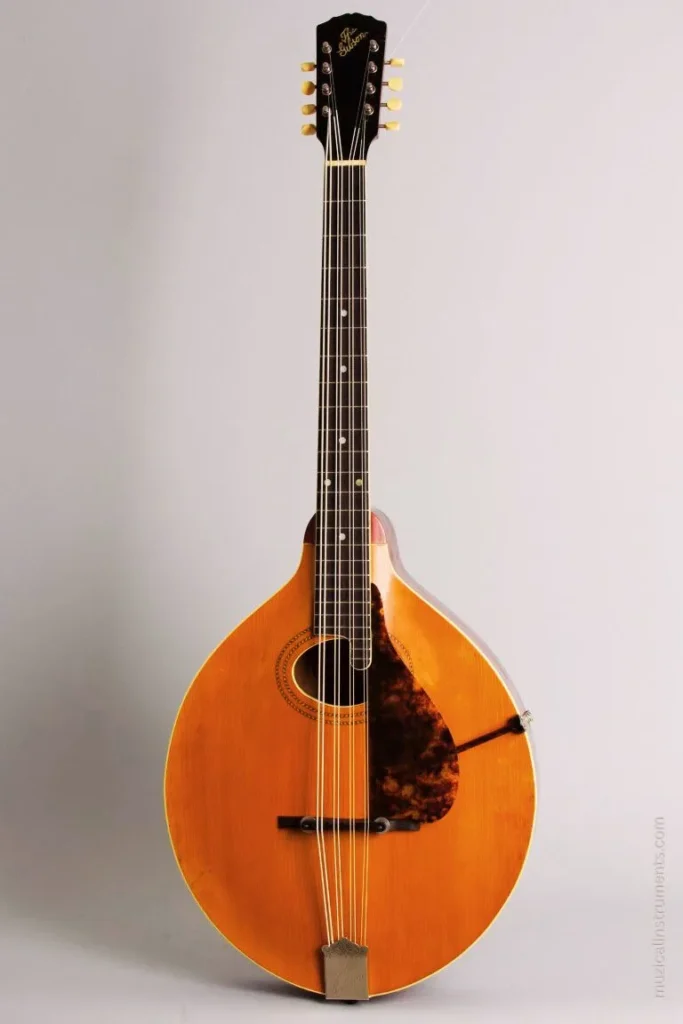
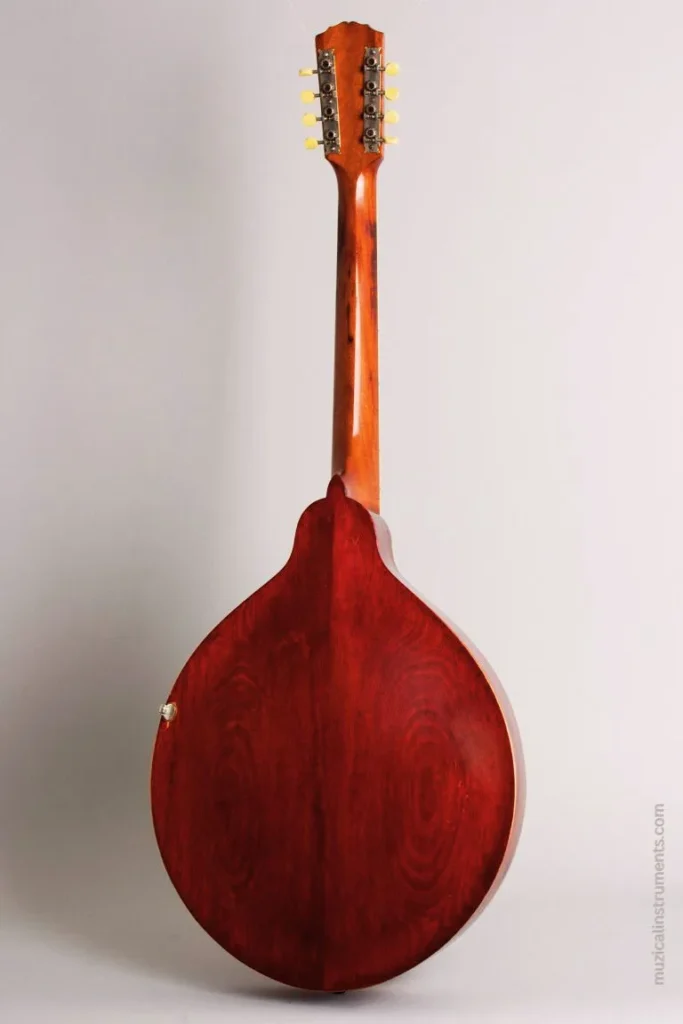
The top of the mandocello, which is the front part of the body, is the most important piece for making sound. It’s usually made from a softwood because softwoods are light and strong, which lets them shake, or vibrate, easily to make music. The most popular wood for the top is spruce.
- Sitka Spruce: This is a great all-around wood that gives a strong, clear sound.
- Adirondack Spruce: This wood can be played very loudly without the sound getting messy.
- Cedar: This wood gives the mandocello a warmer and slightly quieter sound. It’s great for softer music.
The back and sides of the mandocello are like a bowl that shapes and pushes the sound out. These parts are made from hardwoods. Different hardwoods change the sound in different ways.
- Maple: This wood makes the sound bright and clear. It helps you hear each note distinctly. Many beautiful mandocellos have maple with wavy patterns in the wood.
- Mahogany: This wood gives a warmer, simpler sound. It’s often described as being “sweeter.”
- Rosewood: This wood makes the sound very rich and deep, with lots of lovely tones ringing out.
A builder chooses a wood for the top and a different wood for the back and sides. This combination is what gives each mandocello its own special voice.
How Are the Neck and Fretboard Made for Easy Playing?
If the body of the mandocello makes the sound, the neck and fretboard are what you use to play it. The neck is the long part you hold. It needs to be very strong because the eight strings pull on it very hard.
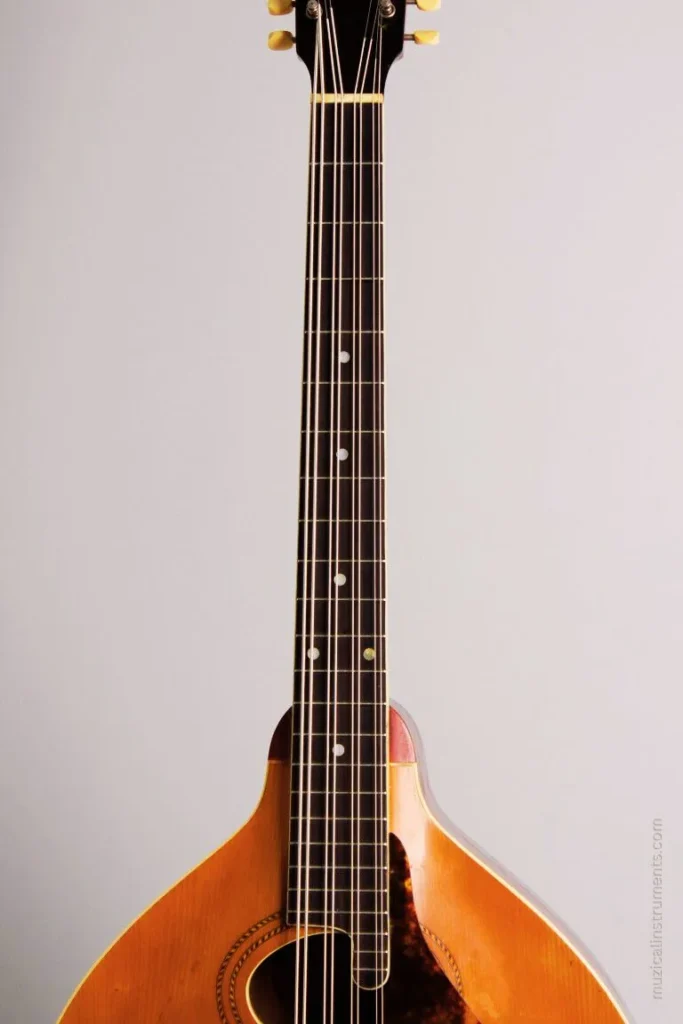
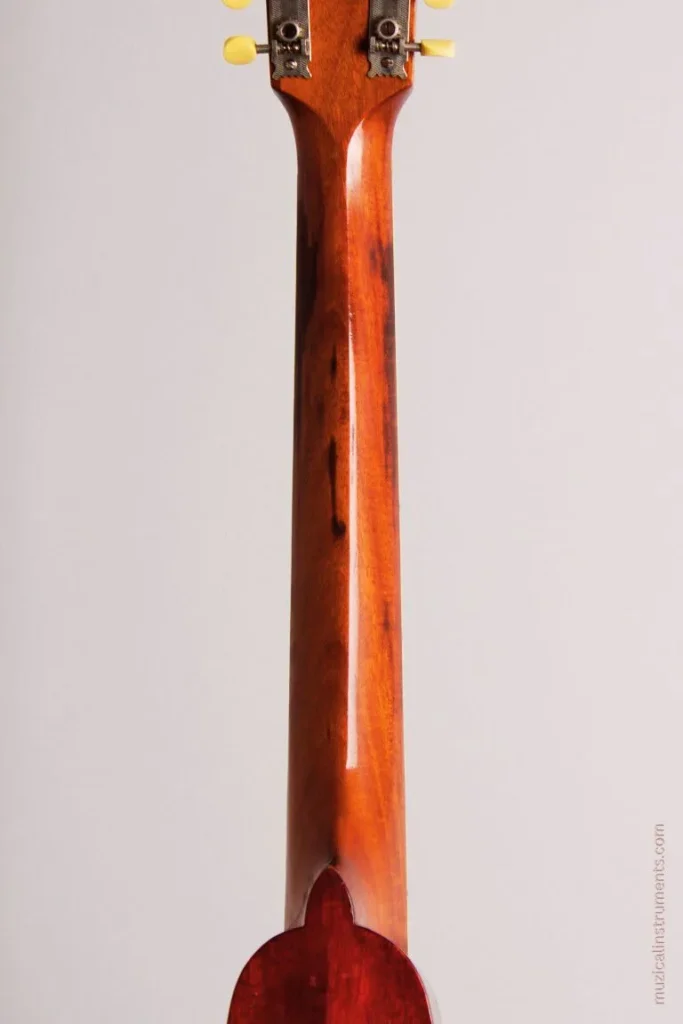
Most necks are made from mahogany or maple. These woods are strong but not too heavy, making the instrument comfortable to hold. To make the neck even stronger, builders sometimes glue a few pieces of wood together. Inside the neck, there is a hidden metal bar called a truss rod. This rod helps keep the neck straight so the strings are always easy to press down.
The fretboard is the flat piece of wood on the front of the neck where you put your fingers. It has thin metal strips called frets that show you where to place your fingers to make different notes. The fretboard needs to be made of a very hard, smooth wood.
- Ebony: This is a very hard, dark wood. It helps make the notes sound bright and clear.
- Rosewood: This wood is a little softer than ebony and has a warm, smooth feel.
- Richlite: This is a new material made from paper. It’s very strong like ebony and is a good choice for the planet.
The neck and fretboard work together to let you play music comfortably. A well-made neck makes an instrument fun and easy to play. So when you look at what is a Mandocello made of, you’ll see that it’s not just about sound, but also about choosing materials that make an instrument feel good in your hands.
What Are the Other Metal and Plastic Parts?
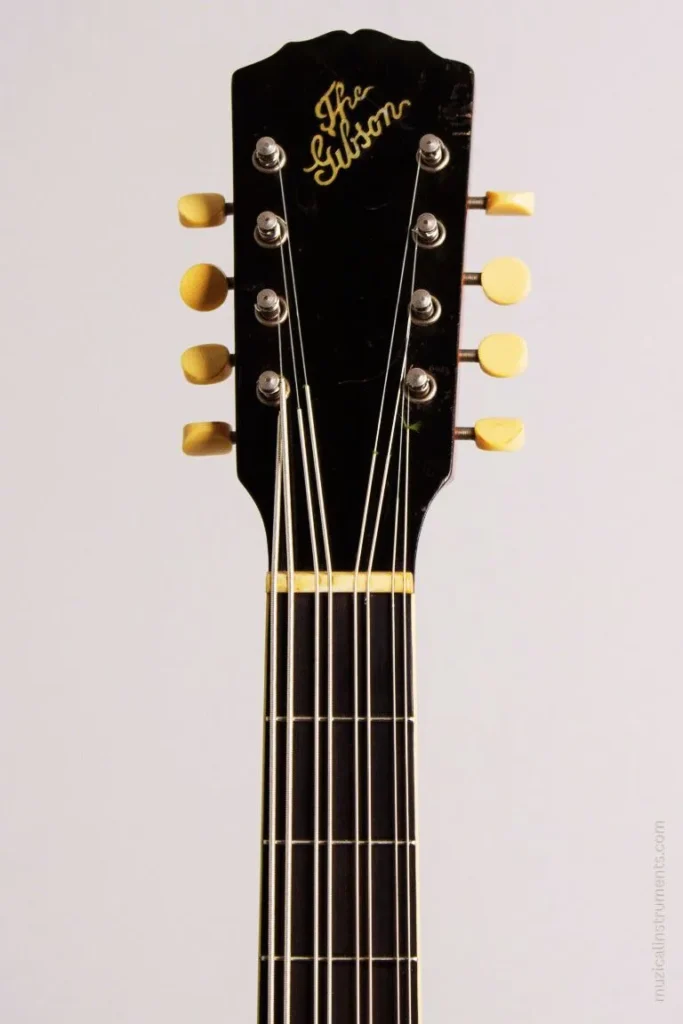
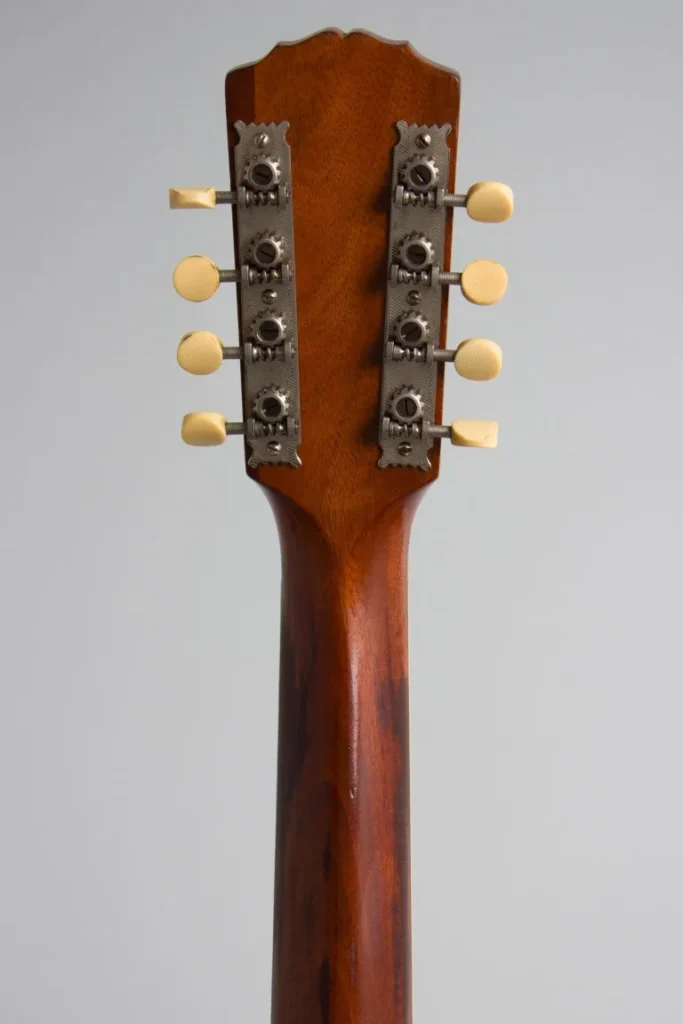
The complete answer to what is a Mandocello made of goes beyond just wood. The instrument also has many small metal and plastic parts that are very important for it to work.
- Tuners: These are the knobs on the head of the mandocello. You turn them to tighten or loosen the strings to tune them. Good tuners are made of steel and turn smoothly, keeping the strings in tune.
- Strings: The strings are what you pluck to make a sound. They have a steel center and are wrapped with other metals, like phosphor bronze. Bronze strings have a warm sound.
- Bridge and Saddle: The bridge is a small piece of wood that sits on the top of the mandocello. The strings pass over a thin strip on top of the bridge called the saddle. The saddle is often made of bone or a hard plastic like Tusq. This is where the shaking from the strings passes into the wood top to make sound.
- Tailpiece: This is the metal part at the bottom of the mandocello that holds the ends of the strings. It needs to be very strong.
- Finish: The shiny coating on the outside of the mandocello is called the finish. It’s like a clear paint that protects the wood. A thin finish is better because it lets the wood shake more freely to make a bigger sound.
All these pieces, big and small, have to work together perfectly to make a mandocello sing.
How Do Materials Change the Sound and Price?
As you’ve learned, different materials change how a mandocello sounds. These choices also change how much the instrument costs.
A mandocello made with rare woods, like Brazilian rosewood, will cost a lot more than one made with common woods like mahogany. It’s not just about the wood itself, but also about how it sounds. Rare woods often have a sound that many people feel is richer or more special. The small parts matter, too. High-quality tuners that stay in tune better will add to the cost.
Here’s a simple table to show how this works:
| Part | Cheaper Option | What It Does | More Expensive Option | What It Does |
|---|---|---|---|---|
| Top Wood | Sitka Spruce | Gives a good, clear sound. | Adirondack Spruce | Can be played louder and has a richer sound. |
| Back & Sides | Mahogany | Gives a warm, simple sound. | Rosewood | Gives a deep sound with more ringing tones. |
| Fretboard | Rosewood | Feels warm and smooth. | Ebony | Helps notes sound bright and lasts a long time. |
| Saddle | Plastic (Tusq) | Works well and sounds good. | Bone | A classic choice that helps sound travel well. |
When you buy a mandocello, you are paying for both the materials and the time it took a skilled builder to put it all together. A builder who carefully shapes every piece by hand makes an instrument that sounds much better, and that work adds to the price. This shows that the complete answer to what is a Mandocello made of includes not just the parts you can see, but also the time and skill of the person who built it.
It’s More Than Just Wood and Metal
So, what is a Mandocello made of? As you can see, a mandocello is made of many different things. It’s a mix of special woods and strong metals, all put together in a very careful way. A skilled builder knows how to choose the right pieces to create an instrument that not only looks good but sounds amazing.
Now that you know what a mandocello is made of, you can listen to them in a new way. You can try to hear the brightness of a maple mandocello or the deep warmth of one made with rosewood.
The best way to learn more is to go out and hear one for yourself. If you get a chance, play a few different mandocellos. Feel how they are built and listen closely to their unique voices. Understanding what goes into making one will help you enjoy its beautiful music even more.
Now that you know what the mandocello is made of, see this mandolin vs mandocello comparison to understand how it stands apart from its smaller cousin.
Frequently Asked Questions
Here are some common questions people have about what is a Mandocello made of.
1. What is the single most important wood on a mandocello?
The most important wood is the top, also called the soundboard. This is the front piece of the instrument’s body, and it’s usually made of spruce or cedar. Think of it like a speaker cone, it vibrates the most and creates the main sound. While the back and sides add color to the tone, the top is what gives the mandocello its powerful voice.
2. Why do some mandocellos cost so much more than others?
The cost comes down to two main things: materials and craftsmanship. A mandocello made with very rare wood (like certain types of rosewood) will cost more. More importantly, a master builder (luthier) spends many hours carefully shaping and tuning each piece of wood by hand. This skill and time add a lot of value and make the instrument sound its absolute best, which increases the price.
3. Are vintage mandocellos made from better materials?
Not necessarily “better,” but sometimes “different.” Some older mandocellos were made with woods that are now very rare and protected, like Brazilian rosewood. Many people love the sound of these aged woods. However, modern builders have very precise tools and a great understanding of sound, so a new, well-made mandocello can sound just as amazing as a vintage one.
4. Can I change my mandocello’s sound by changing the strings?
Yes, absolutely! Changing your strings is one of the easiest and cheapest ways to change your sound. Strings made with phosphor bronze will generally give you a warmer, richer tone. Strings made with 80/20 bronze will sound brighter and crisper. Experimenting with different brands and types of strings is a great way to find the sound you like best.
5. Does the shiny finish on a mandocello actually change the sound?
Yes, it can have a surprising effect. The finish protects the wood, but if it’s too thick or heavy, it can stop the wood from vibrating freely. Imagine trying to talk with a heavy blanket over your head, the sound would be muffled. A good, thin finish protects the instrument while letting the wood “breathe” and sing, leading to a louder and richer tone.
